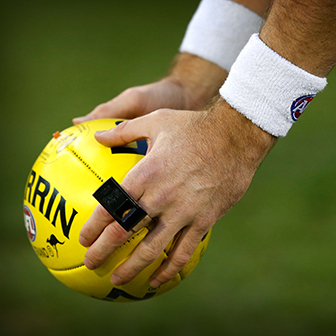A surpisingly short history of several AFL laws

By Stirling Coates
The game of AFL has been constantly refined over the last few decades, indeed 2015 will be just the second year since 1993 that no new laws will be introduced to the Home and Away season.
While some new rules are still a little contentious in footballing quarters (and pubs) everywhere, the teething period before a rule is seen as a mainstay in the game might be shorter than you’d think.
Take a look at these four ubiquitous and widely accepted rules, introduced relatively recently.
1) Twenty-minute quarters
Community leagues and modified-rule competitions have always had a wide range of playing times, but in the AFL it’s always been twenty minutes a quarter plus time on.
Right?
Wrong.
The current arrangement of twenty-minutes per quarter plus time on was only introduced in 1994.
Prior to that, quarters took twenty-five minutes plus time on.
Given the steady increase in the amount of stoppage time over the last few decades though, it’s highly unlikely that matches have actually decreased in length.
2) The 50-metre penalty
“FIFTY!” is right up there with “BALL!” as one of footy’s most memorable chants.
But from the distance penalty’s introduction in 1955 until 1988, time wasters, mark encroachers and umpire abusers were slapped with a far more lenient fifteen-metre penalty.
Melbourne fans know all too well that the fifteen-metre penalty could still decide matches, but for the last twenty-five years players have had a stronger deterrent not to take free kicks further.
Besides, “FIFTEEN!” just doesn’t have the same ring to it.
3) 15-metre minimum kick distance for a mark
Increasing the minimum kick distance for a mark has been discussed for quite some time. Opposition to such a change has long centred on keeping the game “as it always been” and not “meddling with tradition”.
Fans on both sides of the debate would be stunned however, to discover that the current minimum distance of fifteen metres has only been in effect since 2002!
For most of the game’s recent history, the minimum distance had been ten metres. Things were even more different way back when though.
In the game’s earliest days, the minimum distance was a modest 4.5 metres, before in 1887 the VFA decided to decrease it to 1.8!
4) Holding the ball – prior opportunity
Holding the ball is perhaps the one law that most differentiates Australian Football from other sports. The concept of prior opportunity, and rewarding someone for tackling a player who’s had the ball for a while is not something you’ll see just about anywhere else.
Holding the ball has been around for more or less the entire game’s history, with various aspects and sub-points added over the year.
Yet, believe it or not, the requirement for a tackled player with prior opportunity to immediately kick or handball has only existed since 1996.
The very law we arguably hold central to the very fabric of Australian Football turns 20 next year.
Even weirder still, from the game’s inception until 1930, players were permitted to simply drop the ball when tackled – without even attempting a disposal.
And when the law was introduced to penalise players who did this, it was repealed just two months later because players and fans alike hated it!
The law was reintroduced in 1939, and it would be safe to say it’s not going anywhere.
So next time a new law is unveiled to the footy world, take a deep breath and relax. Because, as you now know, many of the laws you consider intrinsic to the game aren’t intrinsic at all.


































